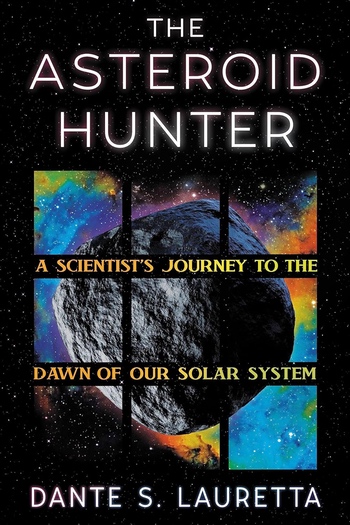Review: The Asteroid Hunterby Jeff Foust
|
| The story of OSIRIS-REx is one of science and engineering, but also of people: “the magnificent ensemble of scientists, engineers, and cosmic aficionados who had rallied together to manifest this vision,” he writes. |
The bulk of the book follows Lauretta after returned to the university about decade later, this time on the faculty at the Lunar and Planetary Laboratory (LPL), with an interest in cosmochemistry and astrobiology. The director of LPL, Mike Drake, offered him an opportunity to take a leadership role in a mission being developed by the lab and Lockheed Martin: returning samples from an asteroid. Drake would be the principal investigator (PI), handling the “up and out” management of the mission, while Lauretta took care of the “down and in” of overseeing the science.
LPL and Lockheed twice pitched the mission, dubbed OSIRIS, for NASA’s Discovery program of relatively low-cost science missions, but was not selected. An opportunity then emerged to offer a scaled-up version of the mission for the larger New Frontiers program. That version of the mission, now known as OSIRIS-REx (for Origins, Spectral Interpretation, Resource Identification, Security, Regolith Explorer), was selected in 2011 for development.
That selection was both the culmination of years of development but also just the beginning. OSIRIS-REx would face many of the familiar technical and programmatic challenges of any mission, exacerbated by tragedy: Drake, in ill health for several years, died just a few months after NASA selected the mission, making Lauretta the PI. Now he would have to deal with the up and out aspects of managing a mission.
The book offers a detailed insider’s perspective of developing and then operating OSIRIS-REx as it made its way to the asteroid Bennu to collect samples that it returned to Earth last September. For those that have followed the mission, there are not too many new details the book discloses that had not been mentioned throughout the course of the mission, but it was interesting to read how he and the mission team dealt with various obstacles. (One interesting item: at one point Lauretta and the OSIRIS-REx team caught wind that JPL was lobbying NASA Headquarters to cancel the mission, yet to be formally confirmed for development, and devote its resources to the Asteroid Redirect Mission, arguing that ARM was a presidential priority and that it could return tons, not grams of material. NASA decided to proceed with OSIRIS-REx, and ARM soon died.)
The story of OSIRIS-REx is one of science and engineering, but also of people: “the magnificent ensemble of scientists, engineers, and cosmic aficionados who had rallied together to manifest this vision,” he writes in the book’s epilogue. The journey that started with seeing a newspaper ad continues with samples from an asteroid now being studied in labs by scientists like Lauretta, hoping to better understand our solar system and ourselves—and perhaps be that thing that provides inspiration for another generation.
Note: we are now moderating comments. There will be a delay in posting comments and no guarantee that all submitted comments will be posted.
